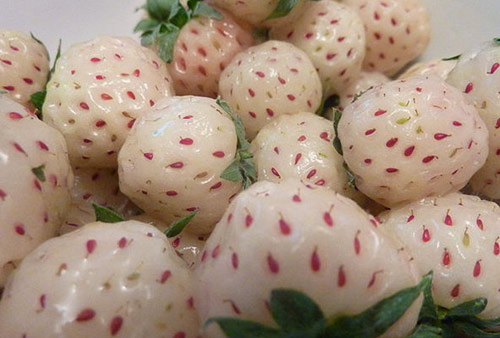現(xiàn)在有對各種各樣東西恐懼的人群,恐高癥、恐巨癥、恐尖癥、小丑恐巨癥、數字13恐懼癥。這不,還有trypophobia(密集恐懼癥)。如果你患了密集恐懼癥那可慘了,看著草莓說不定都會害怕喲!

Trypophobia is a revulsion and fear of objects with clusters of small holes – think beehives, ant holes, and in particular lotus seed heads.
“密集恐懼癥”就是指對有密集小孔的物體感到惡心和恐懼,類似物體有蜂窩、蟻窩,尤其是蓮蓬。
The name for this phobia was only coined in 2005, but there are a surprisingly huge number of people who suffer from this strange fear. Unfortunately for sufferers of this phobia, the Internet has found much joy in photo shopping lotus-pod designs onto various body parts. Google if you dare.
這種恐懼癥在2005年才作為一個新名詞誕生,但患癥人群卻數量龐大。對患癥人群而言不幸的是,網絡上到處都是“蜂窩化”的人體影像處理。不信可以谷歌一下。
British academics Arnold Wilkins and Geoff Cole, who claim to be the first to scientifically investigate trypophobia, believe the reaction to be based on a biological revulsion, rather than a learned cultural fear. In an article, they discussed that the reaction is based on a brain response that associates the shapes with danger. The type of shapes that elicit a reaction were stated to include clustered holes in skin, meat, wood, plants, wounds and bubbles and that observing these shapes made some individuals state that they felt that their skin is crawling, shudder, feel itchy, experience panic attacks, sweat, palpitate and feel physically sick. Some stated reasons behind this fear are that the holes seem "disgusting and gross" or that "something might be living inside those holes".
自認第一個通過科學研究調查密集恐懼癥的英國學者阿諾德? 威爾金斯和吉爾夫?科爾認為,這樣的反應時基于生理上的反應,而并不是文化上的恐懼。在一篇文章里他們討論認為,這樣的反應來自于大腦對于形狀和危險的聯(lián)結。能激發(fā)這樣反應的一般都有很多密集的小孔,比如皮膚、肉類、木頭、植物、傷口和泡沫。對于一些人來說,看這樣形狀的物體會讓他們覺得皮膚正在蠕動、戰(zhàn)栗,覺得癢癢的,有時還會恐慌、出汗、悸動并且身體不適。有人認為出現(xiàn)這種恐懼的原因是這些洞看起來很惡心,感覺會有生物在里面活動。
(中國日報網英語點津 實習生馬歅卓 編輯:陳丹妮)
